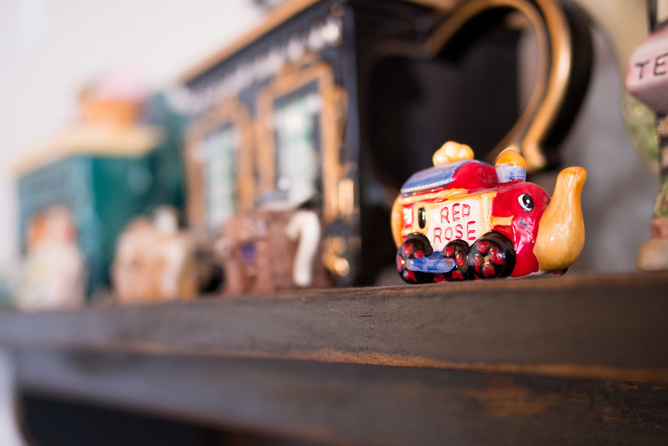We are all hoarders but for some it spirals out of control

By Paul Salkovskis, University of Bath and Sinead Lambe, University of Bath
Hoarding looks weird and is often cruelly parodied on television, where shows suggest that the solution to a compulsive desire to keep stuff is simply a matter of heroically chucking it out. But for those of us studying and working with people who hoard, it’s clear that for most of them this isn’t enough – not even close. It’s a bit like trying to help someone with depression, for example, by asking them to simply smile and get better.
Hoarding isn’t just about keeping things. To successfully make a difference to the lives of hoarders its important to look at and deal with what underpins it. Some would have it that it’s the result of a wonky brain or faulty genes and, as with all mental health problems, it is very tempting to try to explain what appears to be inexplicable in this way. But these are not explanations – and it is not really so inexplicable.
Consider the way humans acquire things. Not only is accumulating more “stuff” than you need very common (think of collectors) but acquisition has come to be associated with high status, is much praised and can be very diverting. Consumerism is part of our culture; you are what is in your wardrobe. Imelda Marcos, the wife of former Philippines dictator Ferdinand Marcos, was defined more by her collection of more than 1,000 pairs of shoes than by any politics.
All of this is fine if you can discard stuff at about the same rate as you acquire. But what if you don’t – or can’t – discard anything? Not even down to the packaging and bits of plastic around the items you get. Or old newspapers that you keep intending to read, or even animals. And even when this gets so bad that it affects your life in some way, such as inhibiting free movement around your home? Something has clearly gone wrong, but what?
Not just about OCD
At the University of Bath we’ve been carrying out research based on the idea that hoarding is the end product of several different things (and we’re also looking out for volunteers with difficulties with hoarding or collecting). After all, hoarding is quite simply having so much stuff that you can’t use your living space for, well, living. Your bath is full of shoes, your cooker has piles of paper on and around it, your bedroom is six foot deep in boxes and bits which are in front of your wardrobe – which is in any case stacked solid with a mix of papers, broken gadgets and packaging. Even, sometimes, years-old food. It’s an overwhelming situation.
Some of this is down to good old-fashioned obsessive compulsive disorder, which is driven by a desire to avoid causing harm to others. Those with OCD who hoard often report having worries that their rubbish will contaminate or otherwise harm others, or that throwing away a possession connected to somebody will cause something bad to happen to that person.
For others the experience of having nothing or losing everything seems to be important. The most obvious example can be found in refugees, who can go from being affluent to having only the clothes they stand up in. Less obvious examples include some people who hoard vividly recall coming home from school to find all their toys had been sold or thrown away – an experience that clearly affected them deeply. Others have experienced a parent being made redundant which led to them losing their family home. For these people, holding on to possessions can provide insurance against future deprivation or loses.
Most people reading this article will have special precious possessions; your father’s watch, your mother’s pearls, your childrens’ first shoes. What if everything that came into your possession had similar meaning? You wouldn’t throw anything away of course. Why might things be invested with such meaning?

Kennymatic, CC BY
We’re investigating the possibility that some people learn, very early in their life, that things they receive from others are more reliable and consistent that the people they came from – and this transfers into their general life. At first it affects stuff linked to your much-loved but unpredictable parents, but later all things with connections to other people are given special significance which means that they can’t be thrown away. Things make you happy where people have not. It all ends up as hoarding things and people living what amounts to a deprived lifestyle surrounded by things which they regard as valuable – buried in treasures.
A malignant interaction
All these different factors – OCD, a fear of loss, emotional attachment – can also combine with hoarding in a particularly problematic way. We think that, in some cases, having more than one of these factors can actually amplify the problems, something we call a “malignant interaction”.
Although often concealed, the distress from hoarding is real and can harm those affected. Environmental health departments know about rot and vermin in hoarders' houses, but harm goes way beyond this – and includes dying of hoarding. Fire brigades know all too well that hoarding not only causes fires but that these can be deadly.
What we know is that different motivations to hoard need different approaches, and that any attempt to help must begin with understanding and care. With this we intend to establish better help for someone who has become overwhelmed by their possessions – and to help that person find a way out of a situation in which they can quite literally be trapped by what they own.
![]() This article was originally published on The Conversation.
This article was originally published on The Conversation.
Read the original article.




